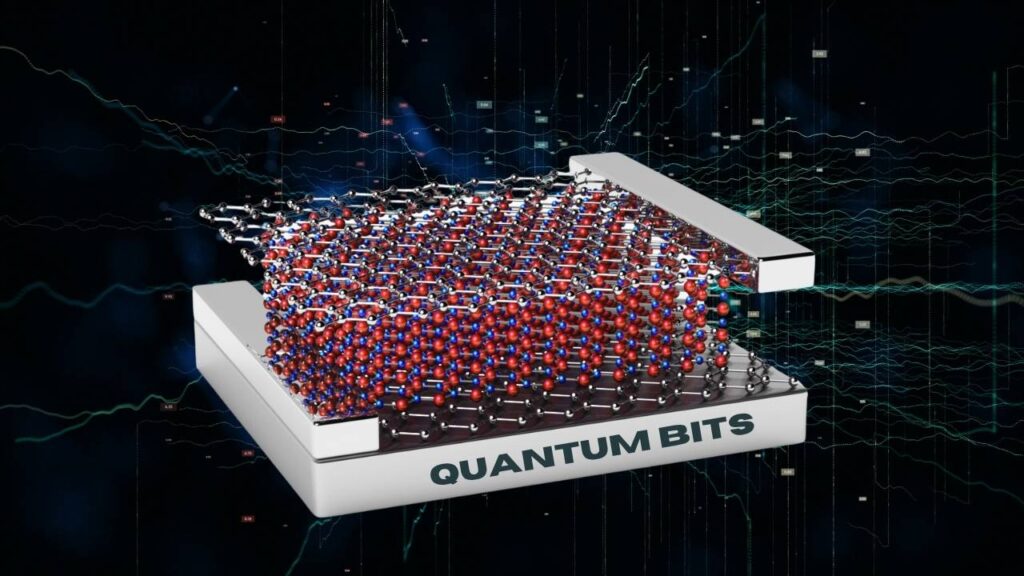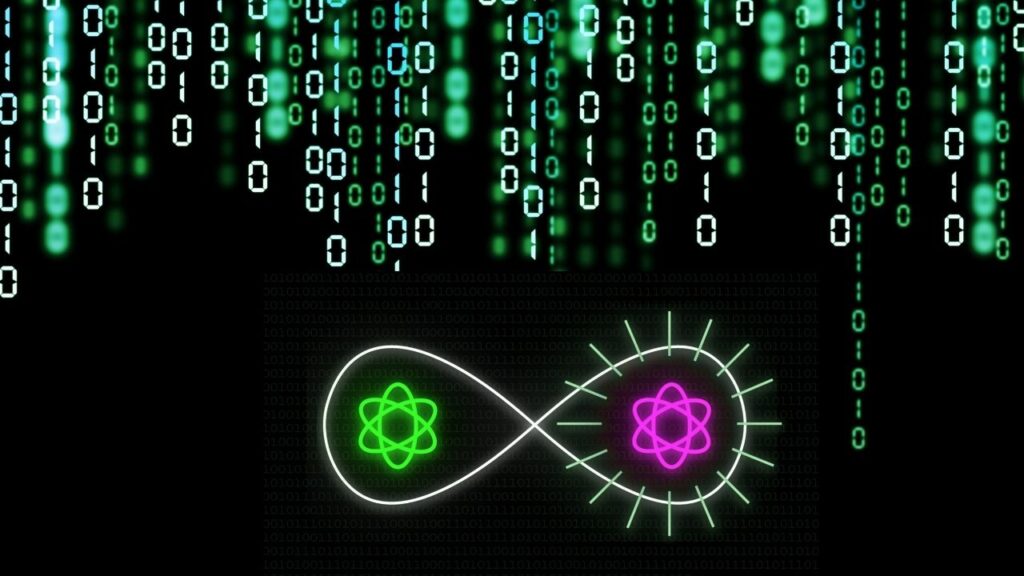IonQ Deploys Quantum Networking System at USAF Research Lab: Quantum technology is rapidly advancing, reshaping the future of computing, communications, and security. Recently, IonQ successfully deployed a state-of-the-art quantum networking system at the U.S. Air Force Research Laboratory (AFRL) in Rome, New York, marking a major milestone in the integration of quantum technologies into national defense infrastructure. This development not only strengthens the U.S. military’s quantum capabilities but also pushes the boundaries of how quantum networks can revolutionize secure communications and scientific research.

This comprehensive article delves into the significance of IonQ’s deployment, explains the core science behind quantum networking, explores its practical applications, and details the collaboration’s broader impact on national security and technological innovation.
What Is Quantum Networking?
Quantum networking refers to the use of quantum mechanics principles—particularly quantum entanglement and superposition—to establish communication channels that transmit quantum information. Unlike classical networks that rely on bits (0s and 1s), quantum networks use quantum bits or qubits, which can exist in multiple states at once and become entangled with each other.
Why Is Quantum Networking Important?
- Unprecedented Security: Quantum networks enable Quantum Key Distribution (QKD), a method to share encryption keys securely. Any attempt at eavesdropping disturbs the quantum state, immediately revealing intrusion.
- Enhanced Computing Power: Linking quantum devices across a network can multiply computational power, enabling complex problem-solving beyond the reach of classical computers.
- New Scientific Frontiers: Quantum networks facilitate experiments and algorithms that explore phenomena not possible with classical tech.
IonQ’s quantum networking system uses trapped-ion qubits—charged atoms confined by electromagnetic fields and manipulated with lasers. This approach is renowned for long coherence times (qubits retain their quantum state longer) and high-fidelity operations (precise quantum gate performance), making it ideal for sensitive applications like defense research.
IonQ Deploys Quantum Networking System at USAF Research Lab
| Aspect | Details |
|---|---|
| Deployment Location | U.S. Air Force Research Laboratory (AFRL), Rome, New York |
| Technology Platform | Trapped-ion quantum networking system |
| Contract Value | Over $94.4 million awarded to IonQ by AFRL since 2022 |
| Purpose | Support research in quantum networking algorithms, secure communications, and scalable quantum computing platforms |
| Global Presence | Quantum data centers in Washington D.C., Seattle, and Basel, Switzerland |
| Broader U.S. Programs | DARPA’s Quantum Benchmarking Initiative, National Quantum Initiative Act |
| Official Sources | IonQ News |
| Security Impact | Enhanced defense capabilities with quantum-secure communication and advanced quantum simulations |
The deployment of IonQ’s trapped-ion quantum networking system at the U.S. Air Force Research Laboratory is a landmark event demonstrating the tangible progress of quantum technologies beyond the laboratory. It embodies the synergy between advanced quantum science and national defense priorities, paving the way for secure communication networks, powerful quantum computing capabilities, and new scientific frontiers.
With robust government support and ongoing research, IonQ’s system is not only enhancing AFRL’s mission readiness but also setting the stage for the quantum-powered future of communication and computing, both in defense and the broader technology landscape.
Deep Dive: How IonQ’s Trapped-Ion Quantum Networking System Works
Step 1: Trapping and Cooling Ions
Ions are electrically charged atoms confined in ultra-high vacuum chambers using electromagnetic traps. Using lasers, these ions are cooled to temperatures near absolute zero, which drastically reduces vibrations and noise, helping maintain quantum coherence—the fragile quantum state necessary for computing.
Step 2: Initializing Qubits
Each trapped ion represents a qubit, which is prepared into a controlled quantum state using laser pulses. The ions can be placed in superposition, allowing them to represent multiple values simultaneously, which forms the basis of quantum computation and communication.

Step 3: Entangling Qubits Across Nodes
Entanglement is generated between ions within a trap and, crucially, across different nodes of the quantum network. Using photonic interconnects—where ions emit photons that travel through fiber-optic cables or free space—the system establishes entangled links. These links enable instantaneous state correlations critical for quantum communication.
Step 4: Secure Quantum Communication

Using entangled qubits, the network performs Quantum Key Distribution. Two parties share encryption keys encoded in the quantum states of qubits. Any interception attempt alters these states, alerting the users to potential security breaches. This makes the communication virtually unhackable with current technologies.
Step 5: Error Correction and Network Scaling
Quantum states are fragile and prone to errors from environmental noise. IonQ’s system incorporates quantum error correction protocols, which detect and fix these errors, ensuring reliable data transmission. Additionally, the network design supports scalability by adding more ions and nodes, enabling larger and more powerful quantum systems.
Why the U.S. Air Force Research Laboratory Invests in IonQ’s Quantum Technology
The U.S. Air Force Research Laboratory’s partnership with IonQ is part of a strategic effort to advance quantum computing and networking capabilities that serve national defense interests. This aligns with initiatives like the National Quantum Initiative Act (NQIA) and DARPA’s Quantum Benchmarking Initiative, aimed at establishing U.S. leadership in quantum science.
Strategic Benefits for Defense:
- Unbreakable Communication: Quantum networks offer communications protected by the laws of physics, eliminating risks posed by quantum-enabled adversaries who might break classical encryption.
- Enhanced Computational Simulation: Quantum computers can simulate physical systems, materials, and chemical reactions with unmatched accuracy, accelerating the development of advanced defense materials and systems.
- Optimization of Complex Systems: Quantum algorithms can optimize logistics, resource management, and mission planning with far greater efficiency than classical approaches.
IonQ’s Expanding Quantum Ecosystem: Global Reach and Collaborative Innovation
Beyond the AFRL deployment, IonQ operates quantum data centers strategically located in:
- Washington D.C. – Supporting governmental and defense-related research.
- Seattle, Washington – Leveraging local tech ecosystem for innovation.
- Basel, Switzerland – Facilitating international collaborations in quantum research.
These facilities support a wide variety of research initiatives in quantum algorithms, materials science, and quantum networking protocols. The partnership with AFRL is a flagship project, demonstrating the maturity and readiness of trapped-ion quantum systems for operational use.
Practical Implications and Future Directions for Quantum Networking
Current Use Cases
- Military Communications: Early adoption of quantum networks by defense agencies ensures a secure communications infrastructure resistant to cyber threats.
- Scientific Collaboration: Quantum networks enable researchers worldwide to share quantum resources and collaborate on experiments beyond classical limits.
- Quantum Internet Foundations: The groundwork laid by IonQ and AFRL could contribute to building a future global quantum internet, connecting quantum processors and sensors seamlessly.
Challenges Ahead
Despite progress, several technical hurdles remain:
- Distance Limitations: Maintaining entanglement over long distances faces challenges due to photon loss and decoherence, requiring advancements in quantum repeaters and satellite-based quantum links.
- Hardware Scalability: Increasing the number of qubits while maintaining high fidelity and low error rates is an ongoing engineering challenge.
- Integration with Classical Networks: Seamlessly integrating quantum and classical communication networks is crucial for practical deployment.
Cleveland Clinic, IBM, and Hartree Centre Collaborate on Quantum Healthcare Research
Wipro Predicts Scalable Quantum Computing Solutions by Year-End
FAQs About IonQ Deploys Quantum Networking System at USAF Research Lab
What makes trapped-ion qubits more reliable than other qubit types?
Trapped-ion qubits have longer coherence times and precise controllability due to the stable atomic properties of ions and laser-based manipulation, offering lower error rates compared to superconducting or photonic qubits.
How does this deployment impact civilian quantum technology?
While primarily aimed at defense, advancements and breakthroughs from AFRL and IonQ often translate into commercial technologies, accelerating progress in secure communications, financial services, and healthcare.
When can we expect commercial quantum networking?
Commercial quantum networks are emerging, with pilot projects underway globally. However, large-scale deployment will likely take 5-10 years as technology matures and infrastructure develops.
What role does the U.S. government play in quantum technology development?
The government funds and coordinates major research efforts through agencies like DARPA, NSF, and NIST, encouraging private-public partnerships like IonQ’s contract with AFRL to ensure U.S. leadership.






